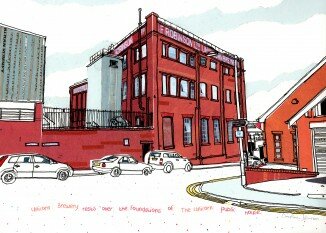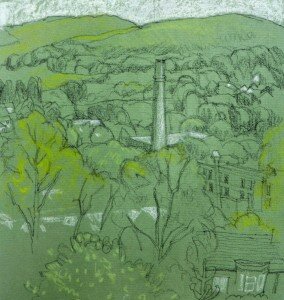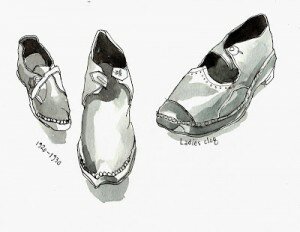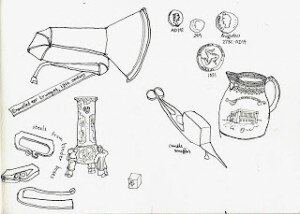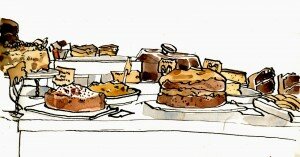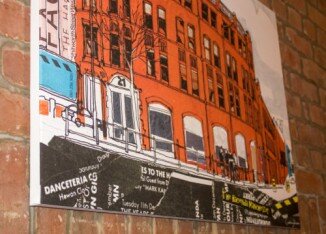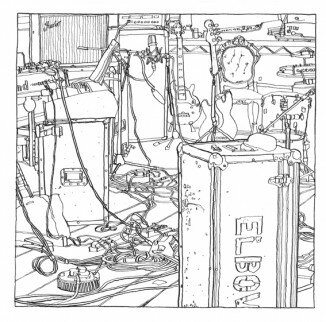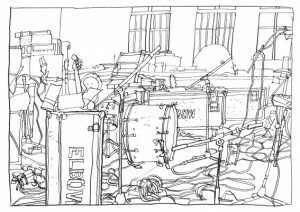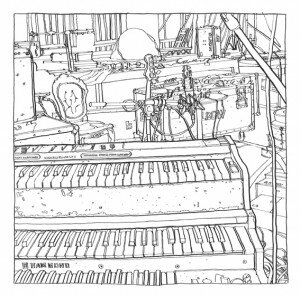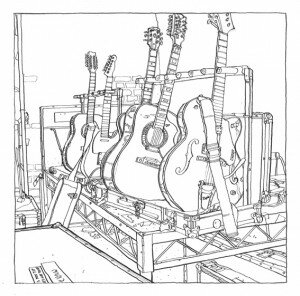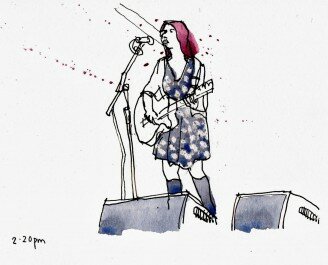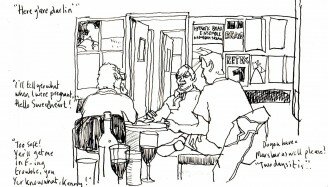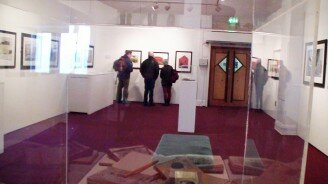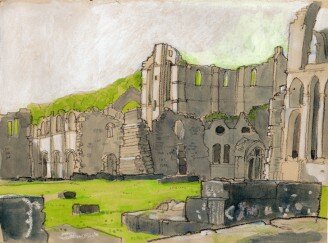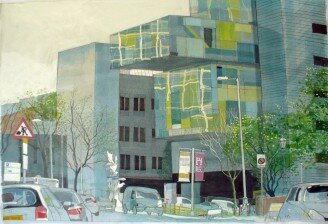Press Release
Opening Sunday 2nd November at 2pm.
Venue : Stockport Art Gallery and War Memorial.
Dates : Tuesday 4th November to Tuesday 16th December 2014.
Caroline is probably best known for her graphic journeys through the streets and
buildings of contemporary Manchester and Salford. This exhibition continues that
voyage home, re-exploring her North West roots, after two decades spent in Brittany,
France.
It’s also an opportunity to view new and previously unseen work. A large panorama in
the Stockport exhibition is the result of two days sketching the BBC Philharmonic in
rehearsal at Media City, and shows off her reportage drawing. ( Caroline is part of a
growing worldwide movement of ‘Urban Sketchers’ who make drawings in towns and cities. )
She’s often seen, sketchbook in hand, drawing in the dark at rock concerts. Allowed to
draw the ‘Big Room’ used by Elbow, at Blueprint Studios in Salford, Caroline captured their
workplace as they prepared songs for their most recent album.
Other pictures in the show display a sensitive approach to atmospheric interiors. Caroline
takes a delight in finding beauty in the ordinary and everyday. She alternates between
pen and ink with collage, painting, watercolour, charcoal and other drawing mediums;
whatever she feels will suit the subject.
Caroline Johnson was born in Preston and studied at the Harris School of Art, Preston,
Falmouth, and London’s Central St. Martins.
Her work has been included in two internationally available books on Urban Sketching,
‘the Art of Urban Sketching’ and ‘Sketch Your World’. It’s also used for illustration,
including a book jacket for the Spanish translation of Iris Murdoch’s ‘Henry and Cato’.
Her varied commissions have included spending a week as a documentary artist in a Care
Home.
Caroline has had successful solo exhibitions at the See Gallery, Rossendale in 2011, and
Salford Museum and Art Gallery in 2013. Her work is also popular in postcard form, selling
through places like the Cornerhouse in Manchester.
In April 2014 she was chosen to receive the first ‘Guardian Witness’ Human Interest
Award for a drawing made of her mother in hospital.
Caroline wrote : ‘Mum is in her late eighties and has dementia and I help care for her. I’d
called round and found her sitting on the settee, hardly able to speak or move and looking
very pale. I rang for the ambulance – we found out later she’d had a heart attack. I didn’t have
my sketchbook with me and hesitated all day to draw her, then finally asked for a couple of
sheets of paper from the nurses.
After several weeks, Mum was able to return home.’
http://www.theguardian.com/theguardian/guardianwitness-blog/2014/mar/28/readers-who-made-thenews-
winners-celebrate-at-guardianwitness-awards
‘Caroline Johnson’s paintings and drawings show a fantastic eye for composition, colour,
light and the subtle details of her subjects. Whether it is of monumental architecture, or the
frailties of the human figure, she brings her characteristic empathy, perception and
draughtsmanship to the finished work.’
James Hobbs – Artist, author of ‘Sketch your World’, and freelance journalist.
